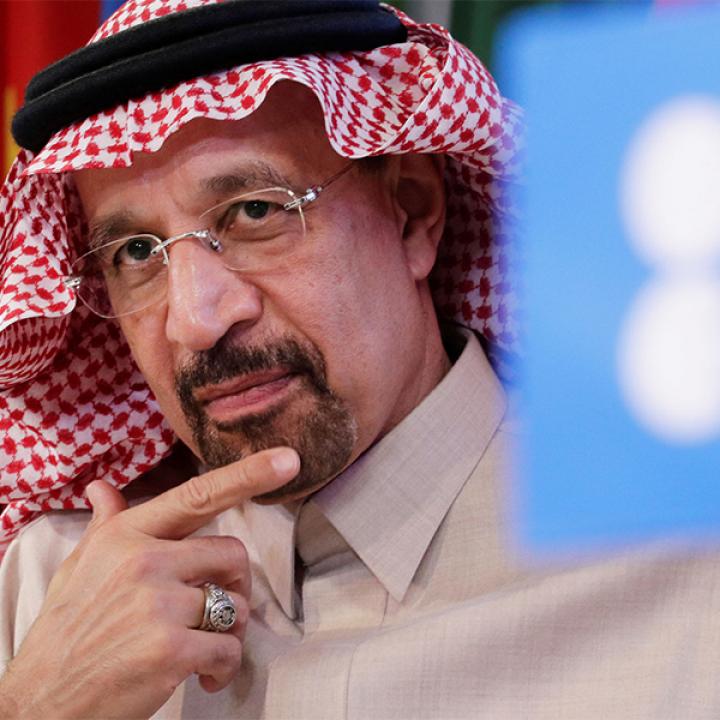
- Policy Analysis
- Policy Alert
Sacked Saudi Energy Minister Returns to Cabinet

Khalid al-Falih’s appointment to a new investment role suggests that the kingdom’s Vision 2030 economic transformation project needs to be reinvigorated.
Last September, Saudi official Khalid al-Falih appeared to run afoul of Crown Prince Muhammad bin Salman’s ambitions after showing caution toward the partial sell-off of state oil company Saudi Aramco. In the space of nine days, the forty-year oil sector veteran found his ministry stripped of its industry and mineral responsibilities, lost his post as chairman of Saudi Aramco, and was dismissed as energy minister.
This week, however, Falih was appointed to head the newly created Ministry of Investment, which replaces the Saudi Arabian General Investment Authority (SAGIA). The move indicates that his experience and talents have been difficult to replace. Indeed, some Saudi officials are signaling that Vision 2030 may slip to “Vision 2035,” and the performance of Aramco shares since December’s flotation has been weak. At last closing, shares once again fell below the initial December trading price of 34 riyals, only marginally above the 32 riyal price at which Saudi citizens were encouraged to buy with special cheap bank loans.
Energy watchers were surprised by the appointment of Falih, who will now find himself sitting in meetings alongside his replacements as energy minister (Prince Abdulaziz bin Salman, an older half-brother of the crown prince) and Aramco chairman (Yasir al-Rumayyan, who also heads the Public Investment Fund, the kingdom’s sovereign wealth body). Abdulaziz was known to be frustrated when working under Falih and will no longer be the only oil expert in the room. Rumayyan has his own problems—on February 11, a front-page article in the Wall Street Journal scrutinized his relationship with Carla DiBello, a former reality-television producer from Florida, noting that some officials at the Public Investment Fund “have grown frustrated with his attention to Ms. DiBello during a time when the fund’s major investments are struggling.”
Although announced in the name of King Salman, Falih’s appointment and other recent changes are more likely attributable to the crown prince, the kingdom’s de facto day-to-day ruler. The head of SAGIA was fired, as were the ministers for media and the civil service. New ministries were created for tourism and sports, key parts of the social changes associated with Vision 2030. The new sports minister is Abdulaziz bin Turki al-Faisal, the car-racing prince whose father, one-time intelligence chief Prince Turki al-Faisal, recently described President Trump’s new Middle East peace plan as “a Frankenstein creation.” The new tourism minister is Ahmad al-Khatib, a confidant of the crown prince.
Going forward, Falih will not only have to help keep Vision 2030 on track, but also prepare the ground for the opportunities that will flow from Saudi Arabia hosting the G20 summit this November. In the meantime, he must cope with continued foreign investor caution stemming from the 2018 murder of dissident journalist Jamal Khashoggi and the 2017 incarceration of Saudi business leaders and rival princes in the Riyadh Ritz-Carlton during a crackdown on corruption. Oil prices were weak even before the economic impact of the coronavirus, which has now reached the Middle East, so Falih’s policy options for overcoming these obstacles will be constrained.
Simon Henderson is the Baker Fellow and director of the Bernstein Program on Gulf and Energy Policy at The Washington Institute.



